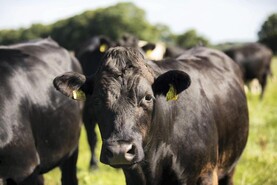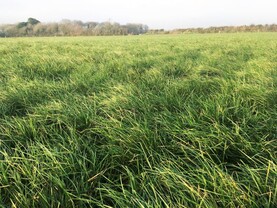The number of inseminations recorded by artificial insemination (AI) technicians so far this year is back 2.5% compared to the same period last year.
Poor demand for dairy stock, an increase in the use of sexed semen and a levelling off of dairy expansion has meant that farmers are opting to breed fewer dairy replacements.
Demand for beef bulls is also much stronger than previous years, suggesting farmers have taken a rational decision to use less AI and introduce bulls earlier.
Releasing bulls to the herd earlier than normal brings additional risks in that the bull will have more work to do and risks missing cows, getting worn out, or becoming sub-fertile.
Another issue is that not all beef stock bulls are going to add much value in terms of the beef merits of their off-spring.
Ideally, farmers would continue with AI for another few weeks but rather than using dairy AI, use some good beef AI bulls instead and keep the bulls for later in the season when bulling activity decreases and heat detection gets harder.
Aside from the hassle of AI, there is a trade-off between choosing an AI bull with good beef merits, calving ease, gestation length and delivers in the marketplace.
The average price paid for a three-week-old Hereford and Angus bull calf was €205 and €179, respectively.
These elements don’t always go well together.
The marketplace largely failed to deliver for dairy farmers last spring with ICBF data showing three-week-old Holstein Friesian bull calves making €59 on average.
Meanwhile, the average price paid for a three-week-old Hereford and Angus bull calf was €205 and €179, respectively.
If substantially more of these beef-bred calves come on the market next spring, will there be buyers for them and at what price? The time has passed when breed alone was an indicator of quality. Now, calf buyers are more astute as to weight for age and beef merit.
With more information becoming available on the commercial beef value of calves it is likely that even beef breeds with lower beef merit could be regarded in the same way as Holstein Friesian calves were this spring.
Cows that go in-calf this weekend will calve down in the first week of March next year, so the calves will still be early. There should be a good demand for these calves if they have a high beef merit. While a good demand may not translate to a high price, being able to sell these calves in mid-March might be worth more than price on some busy farms.
Picking bulls
The days of picking one beef AI bull are over. To maximise beef merit and minimise risks of calving difficulty a small team of three or four bulls should be used, with cows pre-assigned to bulls based on their size.
On older and larger cows a bull with a slightly harder calving difficulty can be tolerated whereas easier-calving bulls should be used on younger cows.
I would be slow to recommend bulls with a calving difficulty of greater than 4.5% for cows or anything with a gestation length greater than zero.
The place to go for information on what bulls to use is the dairy beef index from ICBF. Table 1 is a sample of three bulls with an average calving difficulty of 2.6% and reliability of 87%, an average gestation length of -1.42 days and beef carcase weight of 16.7kg. This highlights that bulls with good beef merits and acceptable calving traits are available.
Interestingly, two of these bulls are Aubrac and one is a Salers.






 This is a subscriber-only article
This is a subscriber-only article










SHARING OPTIONS: